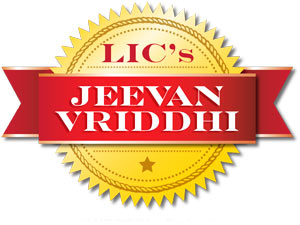Comparing LIC Jeevan Vriddhi versus Fixed Deposits

So does Jeevan Vriddhi actually give investors the features and returns of a fixed deposit? Here is a quick comparison of LIC Jeevan Vriddhi, and the option of a fixed deposit plus term plan. The combination of a fixed deposit and term plan would together offer protection and guaranteed returns, similar to Jeevan Vriddhi.
Term of Investment
Jeevan Vriddhi:
Jeevan Vriddhi comes with a fixed term of 10 years. The life cover is applicable only during this policy term. The guaranteed returns plus loyalty additions if any would be payable on maturity of the policy. Thus Jeevan Vriddhi is most suitable for investors with a short term horizon.
FD plus Term Cover:
Though most banks specify a maximum tenure of 10 years on fixed deposits, on maturity such deposits could be renewed for a further period. Term Insurance policies could be opted for a much longer period of say even 20 years. A combination thus works out most appropriate for investors looking long term.
The Tax Angle
First and foremost what one must remember is that, insurance is not solely for tax saving. The deductions that can be availed are only an added advantage over and above the protection it offers.
Jeevan Vriddhi:
Tax benefits are available under Section 10D and Section 80C, i.e. the premiums as well as the maturity benefits are exempted from tax.
FD plus Term Cover:
Term plans offer a tax deduction under section 80C. Fixed deposits on the other hand, do not offer any tax benefit and the maturity proceeds too, come under the tax purview. And, there are easy ways to avoid the TDS on Fixed Deposits.
Premature Withdrawal
Jeevan Vridhi:
The policy can be surrendered for cash after the policy has run for at least one year. The minimum Guaranteed Surrender Value allowable is equal to 90% of the single premium paid excluding extra premium, if any.
Fixed deposit:
100% of deposit amount is allowable for premature withdrawal. However for higher amounts, a penalty of up to 1% on the interest rate is chargeable. Term plans do not have a liquidity option.
Risk cover
Jeevan Vriddhi:
The policy offers a risk cover equal to five times of premium paid. This may not be adequate for investors seeking a higher cover.
FD versus Term Plan:
Though fixed deposits do not come with any option of a risk cover, when an investment is coupled with a term plan, the protection needs could be taken care of. A term plan could offer much more protection when compared to Jeevan Vriddhi.
Return on investment and maturity benefits.
Let us look at both the options with the help of an example.
Jeevan Vriddhi:
Consider an investment amount of Rs.1, 00,000 at an entry age of 35 years. This amount when invested as a single premium in Jeevan Vriddhi would give a sum assure of Rs.5, 00,000 (5 times single premium) in case of any untimely death.
The Guaranteed Maturity Value varies for each entry age and has already been clearly specified by LIC. For a 35 year old policy holder, the Guaranteed Maturity value would be Rs.1,97,100 (at projected rate of interest of 6%) or, Rs. 2,21,651 (at projected rate of interest of 10%), plus Loyalty Addition if any.
Investment Rate of Return that LIC will be able to earn throughout the term of the policy will be 6% p.a. or 10% p.a., as the case may be. This Projected Investment Rate of Return is not guaranteed. If you do not consider tax benefit the effective yield for Jeevan Vriddhi works out to be between 4% - 7%. This return depends on the age at the time of investment as the guaranteed benefits falls down sharply after age of 35 – 36 years.
FD plus Term Plan:
Let us again consider Rs.1, 00,000 to be invested in an FD and a term plan. For a 5 lakh life cover, the annual premium would work out to be Rs.1, 127, in LIC’s Anmol Jeevan Term Plan. Therefore the 10 year premium works out to be Rs.11270. The balance amount (Rs.1, 00,000-12,820) of Rs. 88,730 Is invested in a fixed deposit of interest 9.25% p.a. for 10 years.
The pre-tax returns in this case work out as Rs. 2, 21,421 and post tax is Rs.1, 80,419. The return on investment would be around 7.5%. It is thus seen that the returns offered by Jeevan Vriddhi is only marginally higher.
Incentives for higher incentives
Jeevan Vriddhi:
An additional 1.25% increase in Guaranteed Returns is available for premiums between Rs 50000.00 to Rs 99000. For premium above Rs 100000.00, there is a 3% increase in Guaranteed Maturity Sum Assured.
FD plus Term Plan:
Most term insurance policies don’t provide incentive for higher premiums. Fixed deposits over and above 5 Lakhs are given a preferential rate of interest.































